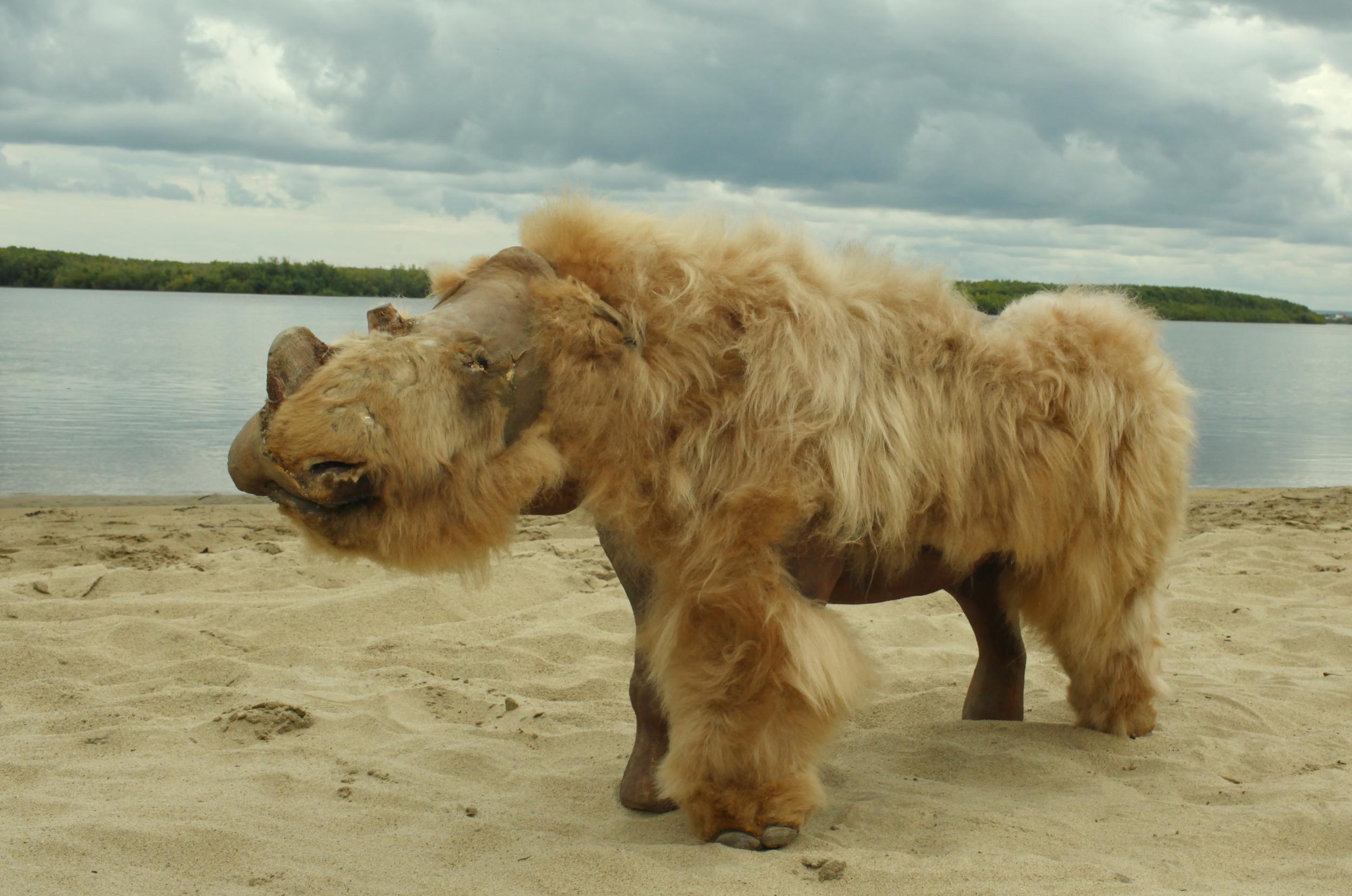Hotter climate drove extinction of woolly rhinos, not humans, study finds
A stable population of woolly rhinos, even after humans arrived in Siberia, contradicted the theory that hunting may have been the primary cause of their demise, writes Louise Boyle


Early humans’ enthusiasm for hunting may not have driven some prehistoric mammals to extinction, as previously believed, but rather the cold-adapted species fell victim to hotter climates.
The findings come from a new study, published on Thursday, which examines the extinction of the woolly rhinoceros – a 6ft herbivore with a shaggy coat who first appeared 350,000 years ago, roaming over a vast range from South Korea to Scotland, and largely inhabiting the region which is now Russia.
Much like its prehistoric companions the woolly mammoth, which roamed over similar territory, and the cave lion, it has been held that the woolly rhinos’ extinction at the end of the last ice age could be attributed to the spread of early humans.
But the new research discovered that woolly rhinos' decline didn’t begin when humans first appeared. In fact, numbers may have increased during this period, according to Love Dalén, senior author and professor of evolutionary genetics at the Centre for Palaeogenetics, a joint venture between Stockholm University and the Swedish Museum of Natural History.
Professor Dalén said: “It was initially thought that humans appeared in northeastern Siberia fourteen or fifteen thousand years ago, around when the woolly rhinoceros went extinct. But recently, there have been several discoveries of much older human occupation sites, the most famous of which is around thirty thousand years old."
Researchers sequenced ancient DNA from tissue, bone and hair samples of 14 woolly rhinos to estimate population numbers and diversity going back tens of thousands of years before they went extinct.
They found that woolly rhinos’ populations remained stable and diverse until only a few thousand years before it disappeared from Siberia, when temperatures likely climbed too high for the cold-adapted species to survive.
The stable number of woolly rhinos, even after humans took up residence in Siberia, contradicted the theory that hunting may have been the primary cause of their demise.
DNA sequencing revealed that woolly rhinos had genetic mutations to help them adapt to frigid temperatures, including a receptor in the skin for sensing warm and cold temperatures, also found in woolly mammoths.
These adaptations suggest that woolly rhinos were best suited to the freezing expanses of Siberia and that their numbers may have dwindled due a brief warming period called the Bølling-Allerød interstadial, which happened at the same time as their extinction, towards the end of the last ice age.
The study was published in journal, Current Biology. Co-first author Edana Lord, a PhD student at the Centre for Palaeogenetics, said: “We’re coming away from the idea of humans taking over everything as soon as they come into an environment, and instead elucidating the role of climate in megafaunal extinctions.
“Although we can’t rule out human involvement, we suggest that the woolly rhinoceros’ extinction was more likely related to climate.”
The researchers are investigating other cold-adapted large prehistoric species to analyse the impacts of a warming, unstable climate.
“We know the climate changed a lot, but the question is: how much were different animals affected, and what do they have in common?” Professor Dalén said.
Join our commenting forum
Join thought-provoking conversations, follow other Independent readers and see their replies
0Comments